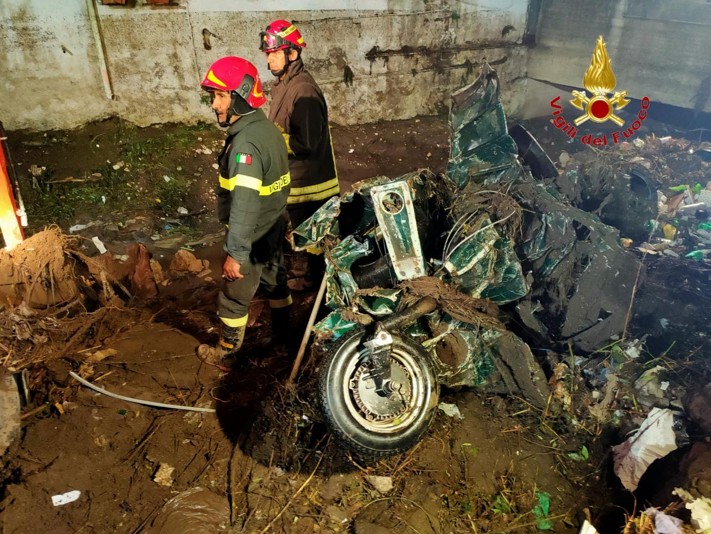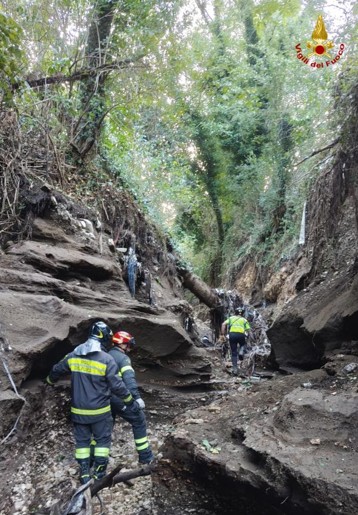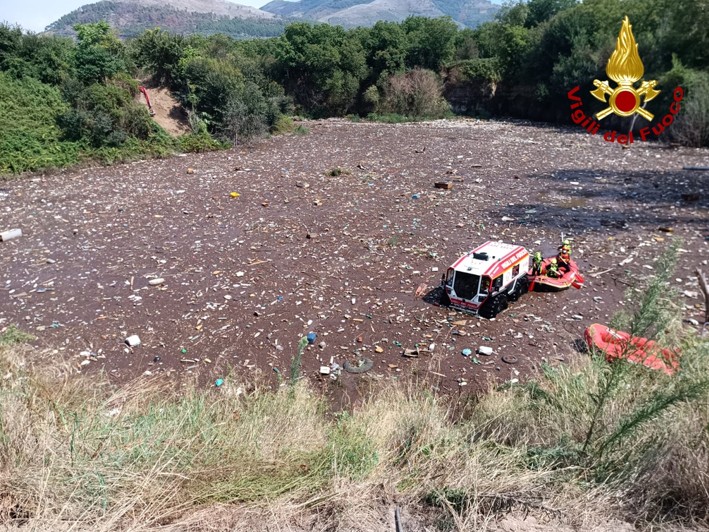Guest post by Giuseppe Esposito and Stefano Gariano
The Landslide Blog is written by Dave Petley, who is widely recognized as a world leader in the study and management of landslides.
In a recent article published in the journal Landslides, Esposito and Gariano (2025) describe the first post-fire debris flow event with fatal consequences recorded in Italy.
On 27 August 2024, a large part of the Campania region in southern Italy was affected by intense rainfall associated with local storm cells forced by orography. Three watersheds affected by wildfires some weeks before responded to the rainfall with intense runoff and erosion processes supplying extremely rapid debris and hyperconcentrated flows downstream. These hit the urban settlements, causing extensive damage to the main and secondary road network, the ground and basement floors of many buildings.

In the town of San Felice a Cancello, two people lost their lives while they were coming back home with their vehicle. The latter was dragged by the flows within the main drainage channel of the watershed for about 800 m. The two lifeless bodies were found only after long searches 2 km away from the impact point, on 2 and 12 of September 2024, respectively.

This event highlights an emerging cascading hazard in the whole Mediterranean area, where both burned areas and intense rain bursts are expected to increase in the future. The very short timing of hydro-geomorphic responses (e.g., 15-20 min) represents the main challenge in the implemention of an effective early warning system for small-scale, urbanised watersheds.

Esposito and Gariano (2025) found many similarities between this and previous post-fire debris flows occurred in the region (Esposito et al., 2023), even if none of them was characterized by a so severe impact on people and properties. According to their analysis, this unprecedented impact may have been due to both natural and human factors, among which the role played by the rainfall inputs is predominant (peak intensity in 30 minutes of 83.6 mm/h; peak intensity in 10 minutes of 106.8 mm/h; both highly ranked among historical events of the same duration in the area, and located well above the triggering threshold for such events previously defined in the area).

The current local warning system for geo-hydrological risk mitigation is based on rainfall thresholds coupled with different risk scenarios. Both this and previous events demonstrated that such system is not suitable to face this type of process, providing insufficient lead time to fully develop an effective emergency response. Therefore, they conclude that focusing on innovative monitoring and predicting tools based on meteorological, geomorphological and hydrological factors may represents a key strategy to face future challenges posed by post-fire debris flows in Italy and similar settings worldwide.
References
Esposito, G., Gariano, S. 2025. Overview of the first fatal post-fire debris flow event recorded in Italy. Landslides. https://doi.org/10.1007/s10346-025-02516-9
Esposito, G., Gariano, S., Masi, R. et al. 2023. Rainfall conditions leading to runoff-initiated post-fire debris flows in Campania Southern Italy. Geomorphology, 423, 108557. https://doi.org/10.1016/j.geomorph.2022.108557
Image credits: www.vigilfuoco.tv (Italian Fire Brigade).

